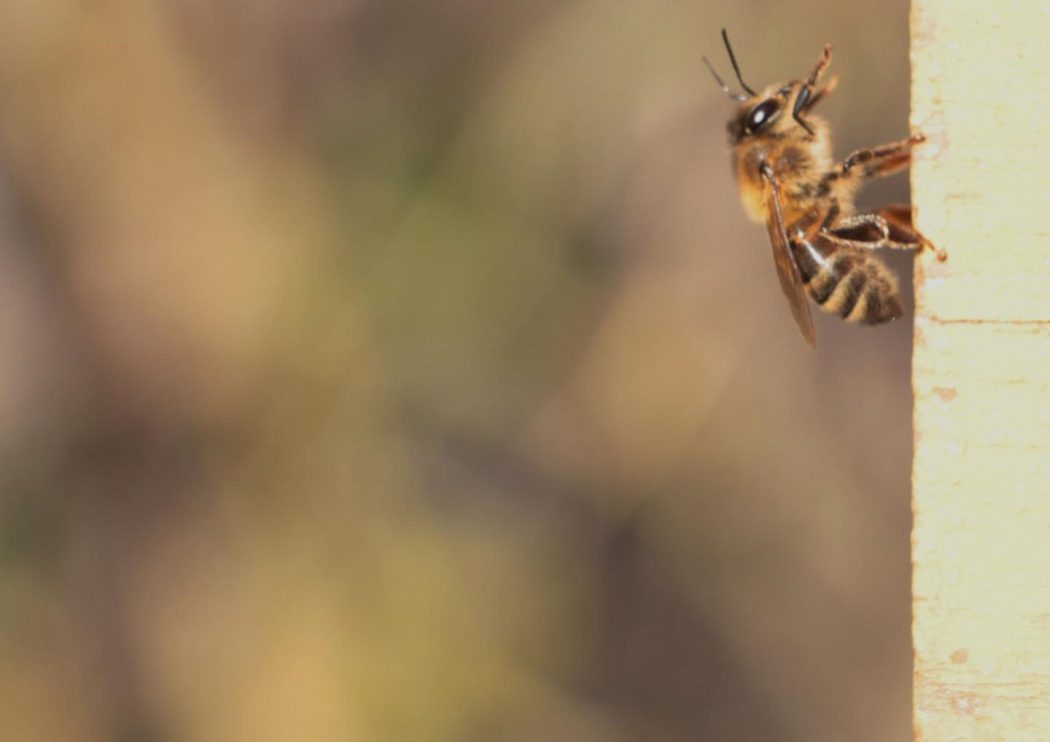UNIVERSITY OF KONSTANZ
IMAGE: ALERTED HONEY BEE (APIS MELLIFERA)
CREDIT: MORGANE NOUVIAN
When do bees sting and how do they organise their collective defence behaviour against predators? An interdisciplinary team of researchers from the Universities of Constance and Innsbruck has provided new insights into these questions. Their study, published in BMC Biology, combined behavioural experiments with an innovative theoretical modelling approach based on “Projective Simulation”. It shows that individual bees decide whether to sting – or not – based on the presence and concentration of an alarm pheromone. The scientists suggest that each bee has a likelihood of stinging that is not constant, but shows at least two internal thresholds for the concentration of the pheromone: one to start stinging and one to stop stinging. The computational modelling also revealed how several environmental factors, such as the rate of predator attacks and predator diversity, likely drove the evolution of the honeybees’ pheromone-based communication in their defensive behaviour.
High concentrations of alarm pheromone as a stop signal
When a honeybee colony is attacked by a predator or seriously disturbed by a human who – accidentally or intentionally – got too close to the hive, the bees of the colony launch a coordinated counterattack to defend the colony and to scare off the trespasser. An important stimulus for them to start chasing and stinging the intruder is the presence of an alarm pheromone, which the bees carry on their stinger. In the event of an attack, the pheromone is dispersed either actively – by guard bees – or automatically upon stinging – by recruited soldiers. Thus, it carries information not only about the presence of an attacker, but also about the extent of the colony’s counterattack. “The more bees have stung the intruder, the more alarm pheromone has been released with each sting and the higher its local concentration,” clarifies Dr Morgane Nouvian, a biologist from Konstanz and joint-lead author of the study together with Andrea López-Incera from Innsbruck.
To understand how individual bees from the hive may use this information to make the ultimate decision to sting for the good of the colony and possibly die as a result, the scientists observed individual stinging responses of Western Honeybees (Apis mellifera) from three colonies. Using different concentrations of natural and synthetic alarm pheromones and a dummy predator, they revealed that the aggressiveness towards the dummy – measured as the stinging likelihood – initially increases with the concentration of the alarm pheromones until it reaches a peak. However, at high concentrations, the aggressiveness drops back to a low level.
This is the first time decreasing aggressiveness at high pheromone concentrations has been demonstrated under controlled experimental conditions. “One possible function of this ‘stopping’ effect of high concentrations of the alarm pheromone could be to avoid over-stinging and unnecessary sacrifice when attacking an already defeated intruder,” Nouvian suggests.
To read the complete article go to; To sting or not to sting? | EurekAlert! Science News









